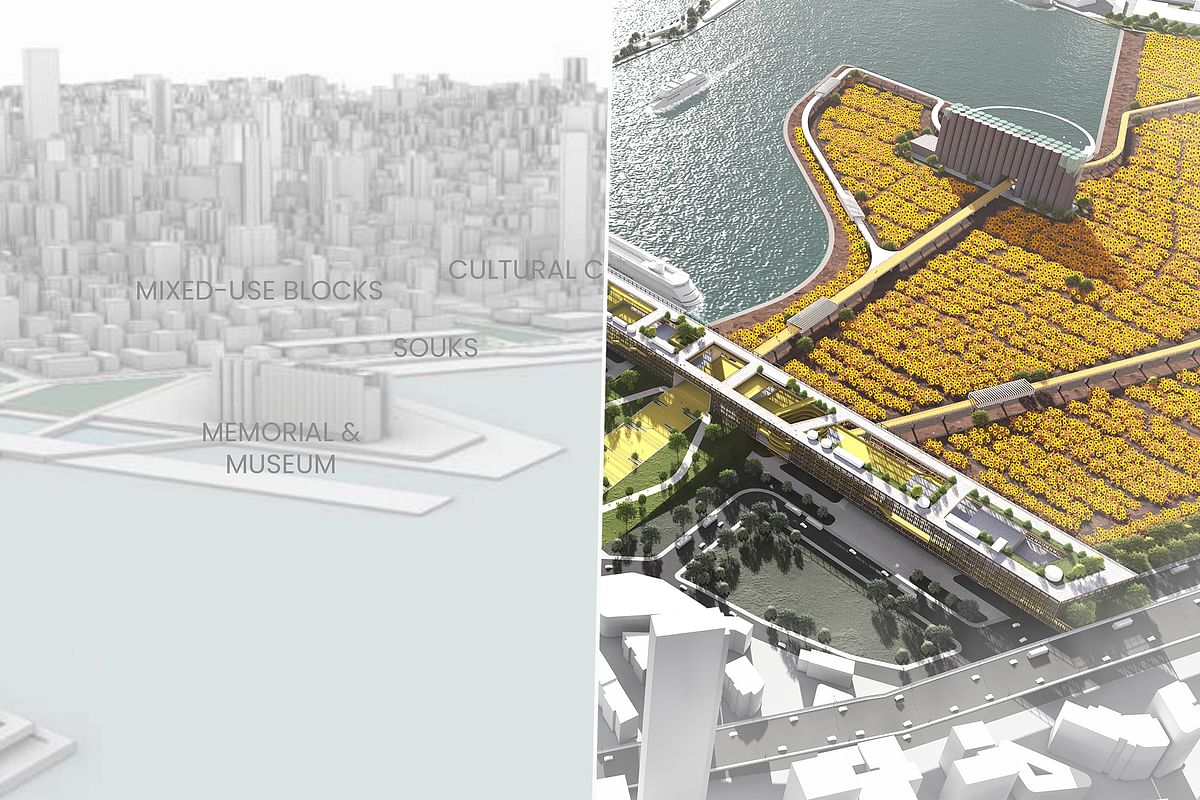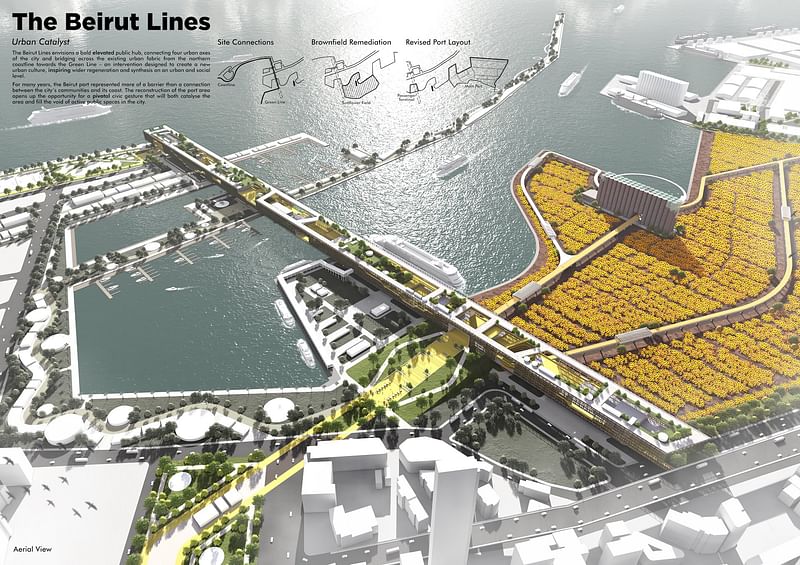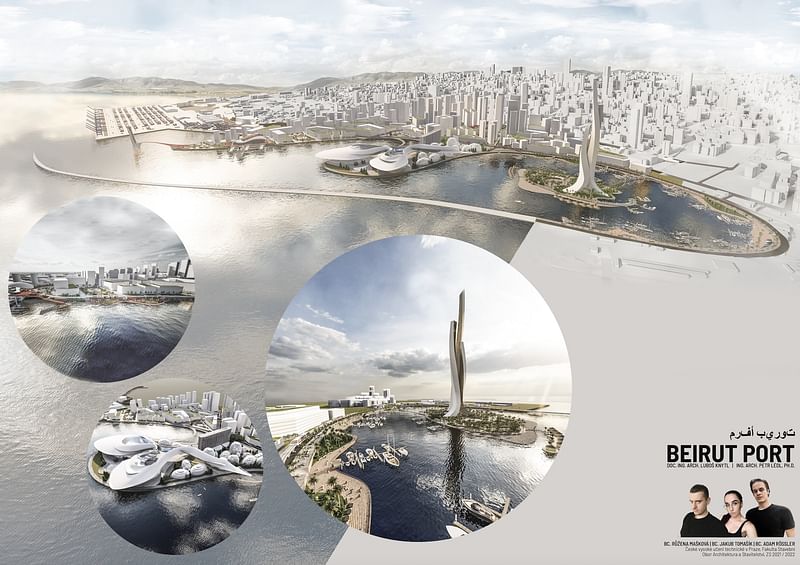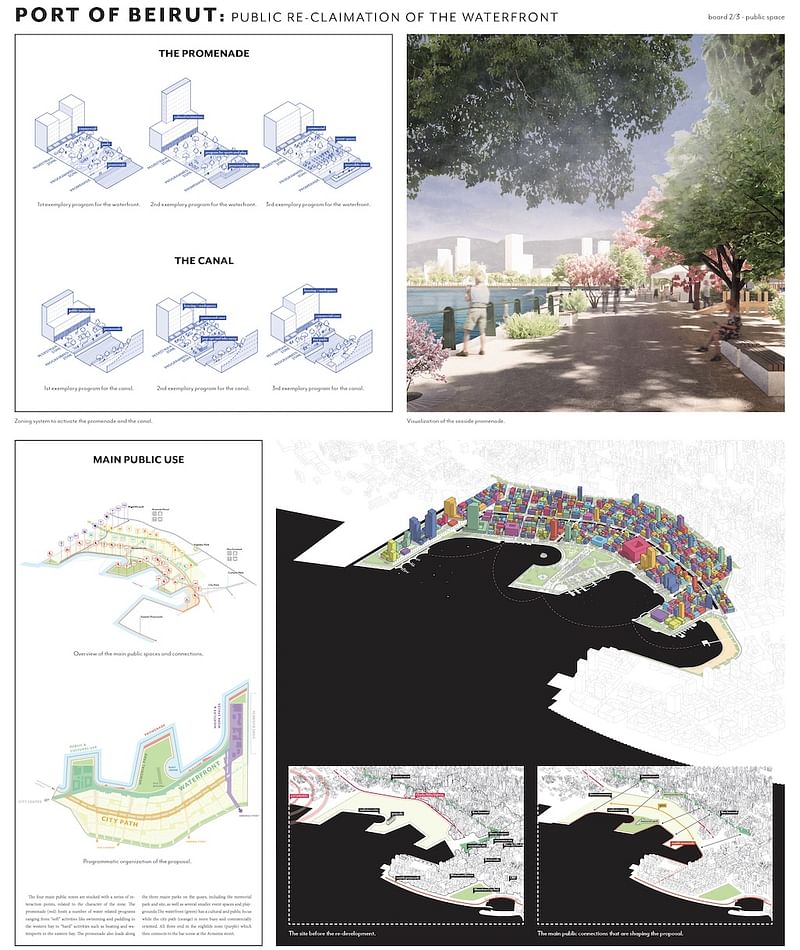Beirut Port Renewal Competition names winning student designs
By Josh Niland|
Friday, Oct 14, 2022

Related
The two first-place winners of Inspireli’s Beirut Port Renewal student competition have been named following a ceremony held recently at the city’s Sursock Museum.
The contest is part of the 7th annual Inspireli Awards and was organized to help Beirut as it looks to create a rehabilitation plan for the port following the devastating August 4th, 2020 explosion that caused 218 deaths while amassing a total of $15 billion worth of structural damages.
For the International competition category, a cross-country Malaysian and Chinese team of Chee Kin Tan and Jennifer Wei Zhang (both of Tsinghua University) took home the prize for their project titled “The Beirut Lines.” They were joined by the Lebanese competition’s overall winner Sergio Zgheib, Peter Aoun, Julien Mikhayel, Nour Kreidy, Rita Abi Zeid, Lea Lahoud, and Thea Bechara of the Lebanese University with “Beirut Port: An Urban Life Generator.” Both projects received an unlisted financial reward and will likely be considered in the anticipated international competition that is sure to draw the attention of the architectural community far afield.
A Czech Republic team of Růžena Mašková, Jakub Tomašík, and Adam Rössler from the Czech Technical University’s faculty of Civil Engineering and Department of Architecture was named as the International competition’s 2nd place winners, followed by German-born 3rd place winner Ruben Epping from Sweden’s Lund University.
Scroll down to see more about each student team's winning designs.
1ST PLACE — LEBANESE PROJECTS CATEGORY

Title: Beirut Port: An Urban Life Generator
Students: Sergio Zgheib, Peter Aoun, Julien Mikhayel, Nour Kreidy, Rita Abi Zeid, Lea Lahoud, Thea Bechara (Lebanese University)
Project description: "'Beirut Port: An Urban Life Generator,' is a project that aims not only to regain the functioning of the industrial part of the port, but also to transform it into an international landmark through different strategies. The design approach began by studying the visual permeability, the public and industrial ratios in the port, connections with nonfunctional landmarks, maritime circulation and creation of new water channels within the project. Some strategies include the creation of a main axis from Electricite Du Liban, through a tunnel under Charles Helou highway directly towards the silos. Soft circulations are incorporated at different spots, one facing the Mar Mkhael Train Station towards Karantina, and one from Mar Mikhael through Charles Helou Bus Station towards the port. All these maintain continuity in the transition and stitching of the now separated regions Karantina, Mar Mikhael, Gemmayze, and Beirut." — Read more here
1ST PLACE — INTERNATIONAL PROJECTS CATEGORY

Title: The Beirut Lines
Students: Chee Kin Tan and Jennifer Wei Zhang (Tsinghua University)
Project description: "The Beirut Lines envisions a bold elevated public hub, connecting four urban axes of the city and bridging across the existing urban fabric from the northern coastline towards the Green Line – an intervention designed to create a new urban culture, inspiring wider regeneration and synthesis on an urban and social level. For many years, the Beirut port represented more of a barrier than a connection between the city’s communities and its coast. The reconstruction of the port area opens up the opportunity for a pivotal civic gesture that will both catalyse the area and fill the void of active public spaces in the city." — Read more here
2ND PLACE

Title: BEIRUT PORT
Students: Růžena Mašková, Jakub Tomašík, Adam Rössler (Czech Technical University)
Project description: "As part of the proposal itself, we dealt with several topics that will lead to a functional connection between the existing Beirut and the new port, preserving the dignity of the place, but also the creation of an attractive location. Currently, the port is in a desolate state, the wreckage has still not been removed, and in the middle of a formerly important logistics hub, we see a damaged grain silo that commemorates the dozens of human victims who died during the blast. This place in the middle of the site where a large amount of ammonium nitrate exploded is where we design our proposal (urbanism) and think of it as the center of the entire port. In the center of the whole locality we design an organic shaped multifunctional building protruding into the sea, which contains not only the Philharmonic, but also the center of modern architecture and art or congress halls. It is an association point that will attract different people from all over the world and will be a place to live day and night." — Read more here
3RD PLACE

Title: Port of Beirut: Public re-claimation of the waterfront
Student: Ruben Epping (Lund University)
Project description: "After the devastating explosion at the port in August 2020, the city of Beirut was left with immense humanitarian and material damage. Most of the port and its surroundings have been destroyed and are waiting for recovery and redevelopment since. The catastrophe started a discussion about the future of the port and offered the opportunity of claiming the land closest to the city center for urban development. To achieve a well accepted and sustainable new district, respecting the location as a site for memorial and connecting it to the existing neighborhoods as well as to the city center is of high importance. At the same time the focus should lay on the needs of the citizens of present and future Beirut. The proposal presents a possible outcome of a development that could be partly accompanied and supervised by representatives of the public. Especially the development of the memorial site to a park should be based on a public participation process. By involving the citizens, the acceptance of the new district can be increased and the emotional relevance of the site respected." — Read more here
RELATED COMPETITION Port of Beirut Renewal — World's Student Architectural Challenge


Share
0 Comments
Comment as :